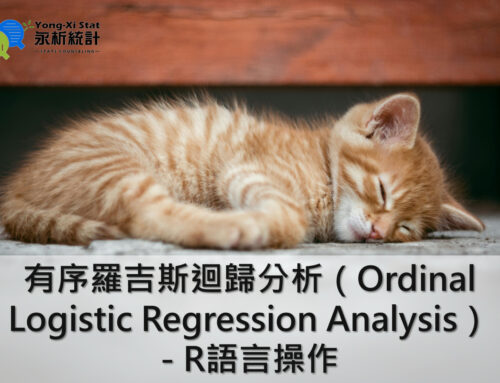本篇介紹驗證性因素分析(Confirmatory Factor Analysis, CFA)的題項包裹法(item parceling)。
在分析驗證性因素分析(Confirmatory Factor Analysis, CFA)時,有些時候會因為單一構念的觀察指標過多,容易造成整體模型適配度被過分低估,進而獲得較差的模型適配度(Nasser & Takahashi, 2003)。
通常一個構念建議的題項數量為3-6題(Coffman & MacCallum, 2005)。此時解決方案建議可採用「題項包裹法(item parceling)」的方式,縮減放入CFA模型的觀察指標個數,藉以提高自由度、降低測量誤差(Williams & O’Boyle, 2008)。以下為題項包裹法的詳細介紹與實際操作方式說明:
- 隨機包裹法(randomly created item parcels): 隨機將同一構念題目進行整合,(Liu, Gong, Zhou, & Huang, 2017)。
- 單一因素法(single-factor method):將同一構念因素負荷量最高與最低的題項進行合併,若出現奇數題數量時,將最後剩餘三個題項進行合併即可(Landis, Beal, & Tesluk, 2000)。
建議可多種作法都嘗試,確認結果是否一致。
參考文獻
Coffman, D. L., & MacCallum, R. C. (2005). Using parcels to convert path analysis models into latent variable models. Multivariate Behavioral Research, 40: 235-259.
Liu, D., Gong, Y., Zhou, J., & Huang, J. C. (2017). Human resource systems, employee creativity, and firm innovation: The moderating role of firm ownership. Academy of Management Journal, 60(3), 1164-1188.
Landis, R. S., Beal, D. J., & Tesluk, P. E. 2000. A comparison of approaches to forming composite measures in structural equation models. Organizational Research Methods, 3, 186-207.
Nasser, F., & Takahashi, T. (2003). The effect of using item parcels on ad hoc goodness-of-fit indexes in confirmatory factor analysis: An example using Sarason’s reactions to tests. Applied Measurement in Education, 16, 75-97.
Williams, L. J., & O’Boyle, E. Jr., 2008. Measurement models for linking latent variables and indicators: A review of human resource management research using parcels. Human Resource Management Review, 18, 233-242.


封面圖-500x383.png)


